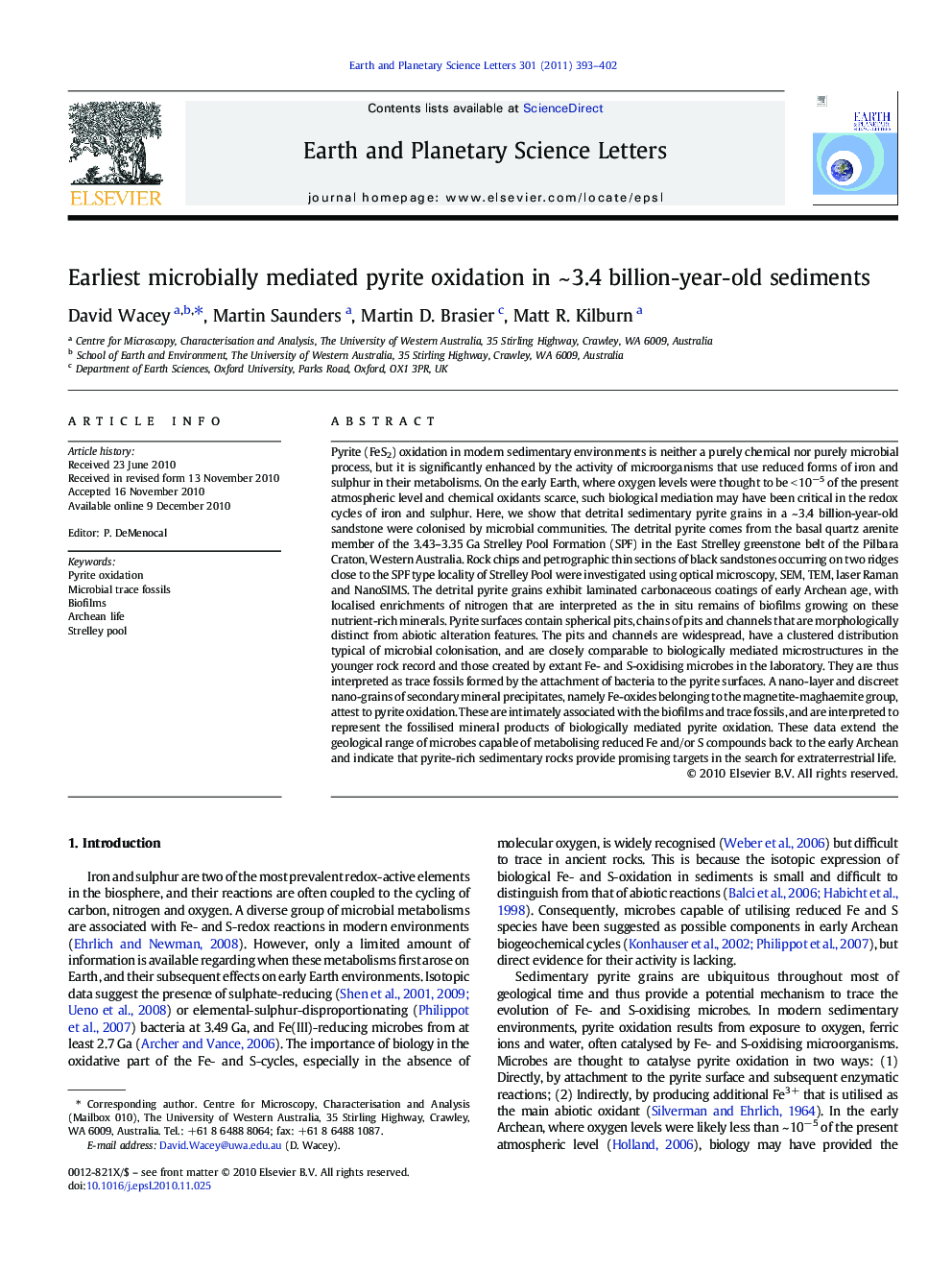| کد مقاله | کد نشریه | سال انتشار | مقاله انگلیسی | نسخه تمام متن |
|---|---|---|---|---|
| 6430904 | 1634838 | 2011 | 10 صفحه PDF | دانلود رایگان |

Pyrite (FeS2) oxidation in modern sedimentary environments is neither a purely chemical nor purely microbial process, but it is significantly enhanced by the activity of microorganisms that use reduced forms of iron and sulphur in their metabolisms. On the early Earth, where oxygen levels were thought to be <Â 10â5 of the present atmospheric level and chemical oxidants scarce, such biological mediation may have been critical in the redox cycles of iron and sulphur. Here, we show that detrital sedimentary pyrite grains in a ~Â 3.4 billion-year-old sandstone were colonised by microbial communities. The detrital pyrite comes from the basal quartz arenite member of the 3.43-3.35Â Ga Strelley Pool Formation (SPF) in the East Strelley greenstone belt of the Pilbara Craton, Western Australia. Rock chips and petrographic thin sections of black sandstones occurring on two ridges close to the SPF type locality of Strelley Pool were investigated using optical microscopy, SEM, TEM, laser Raman and NanoSIMS. The detrital pyrite grains exhibit laminated carbonaceous coatings of early Archean age, with localised enrichments of nitrogen that are interpreted as the in situ remains of biofilms growing on these nutrient-rich minerals. Pyrite surfaces contain spherical pits, chains of pits and channels that are morphologically distinct from abiotic alteration features. The pits and channels are widespread, have a clustered distribution typical of microbial colonisation, and are closely comparable to biologically mediated microstructures in the younger rock record and those created by extant Fe- and S-oxidising microbes in the laboratory. They are thus interpreted as trace fossils formed by the attachment of bacteria to the pyrite surfaces. A nano-layer and discreet nano-grains of secondary mineral precipitates, namely Fe-oxides belonging to the magnetite-maghaemite group, attest to pyrite oxidation. These are intimately associated with the biofilms and trace fossils, and are interpreted to represent the fossilised mineral products of biologically mediated pyrite oxidation. These data extend the geological range of microbes capable of metabolising reduced Fe and/or S compounds back to the early Archean and indicate that pyrite-rich sedimentary rocks provide promising targets in the search for extraterrestrial life.
Research highlightsâºWell-preserved detrital pyrites are found in a 3.4 Ga sandstone from Western Australia. âºPyrites are associated with chromite, rutile and zircon in a placer-type deposit. âºPyrites have carbonaceous coatings interpreted as biofilms. âºPyrites contain micron-sized pits and channels interpreted as microbial trace fossils. âºNano iron-oxides attest to pyrite oxidation. This was likely microbially mediated.
Journal: Earth and Planetary Science Letters - Volume 301, Issues 1â2, 3 January 2011, Pages 393-402